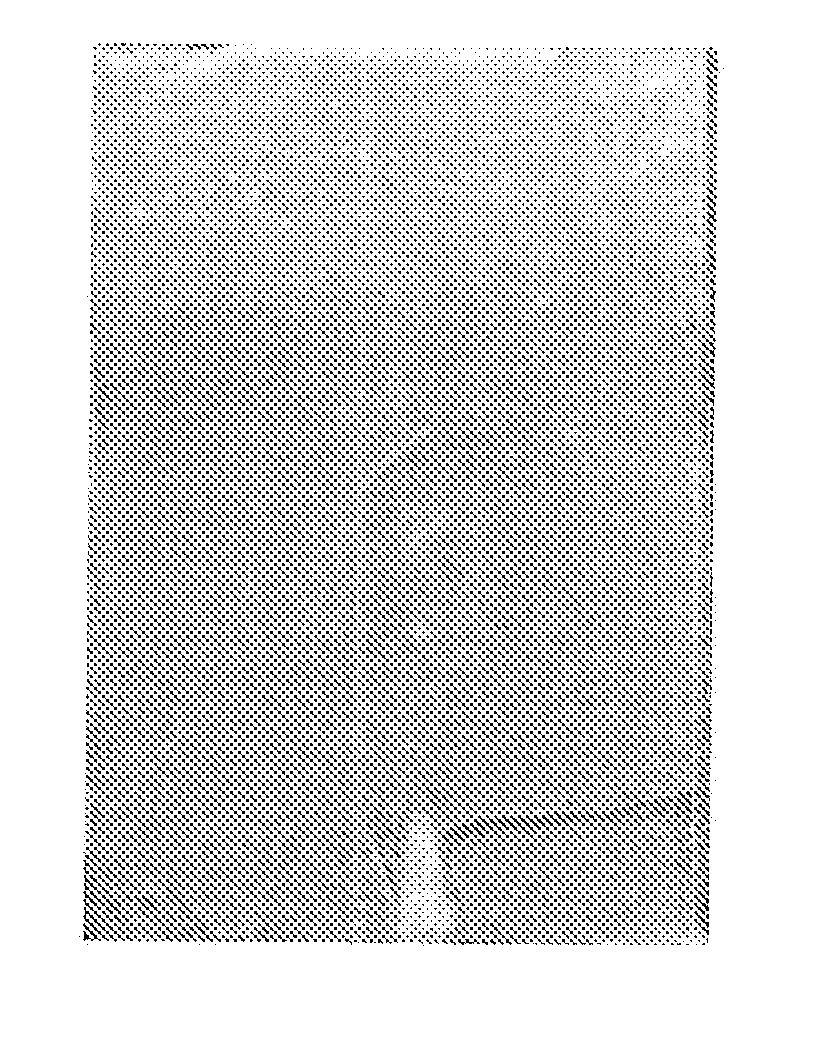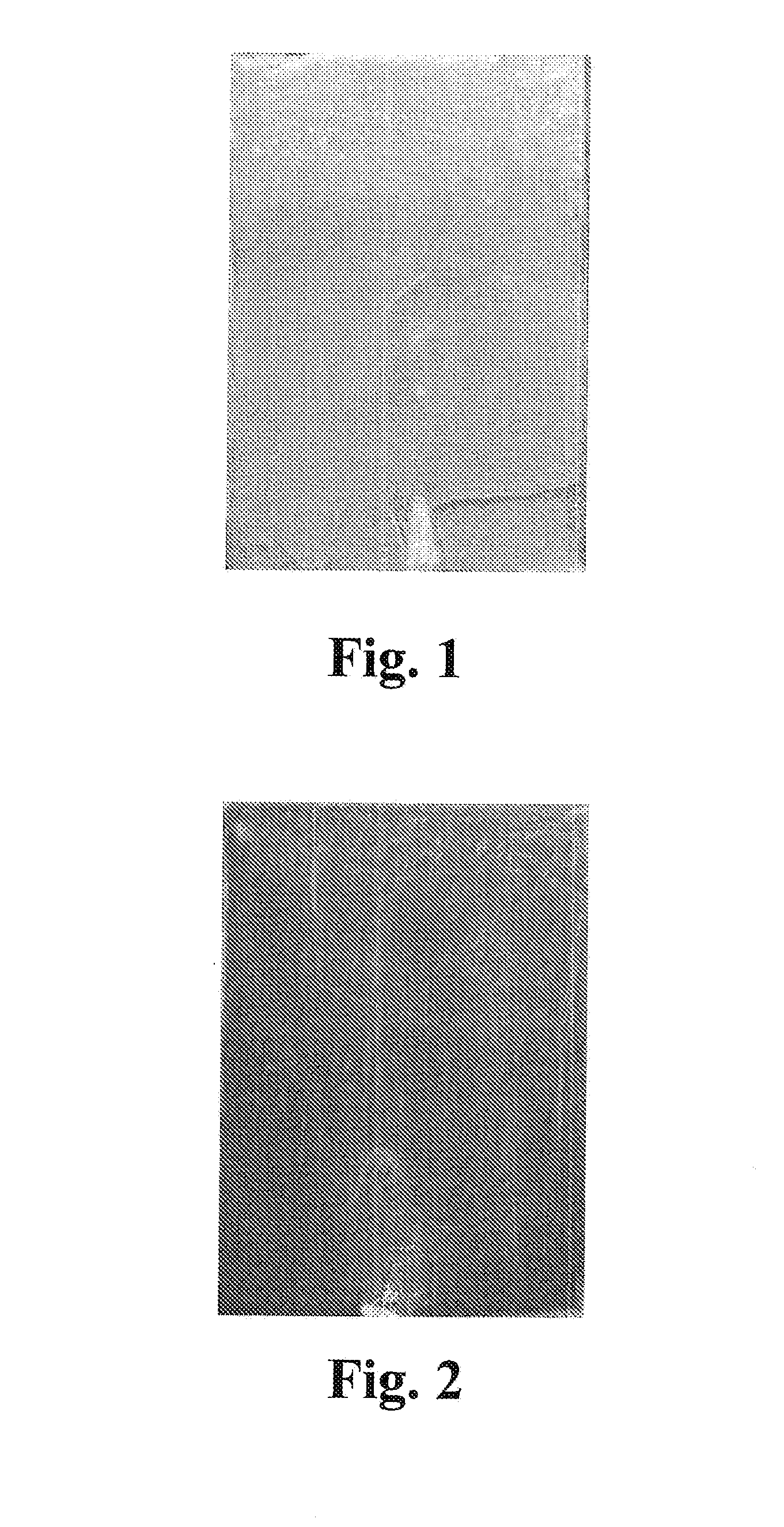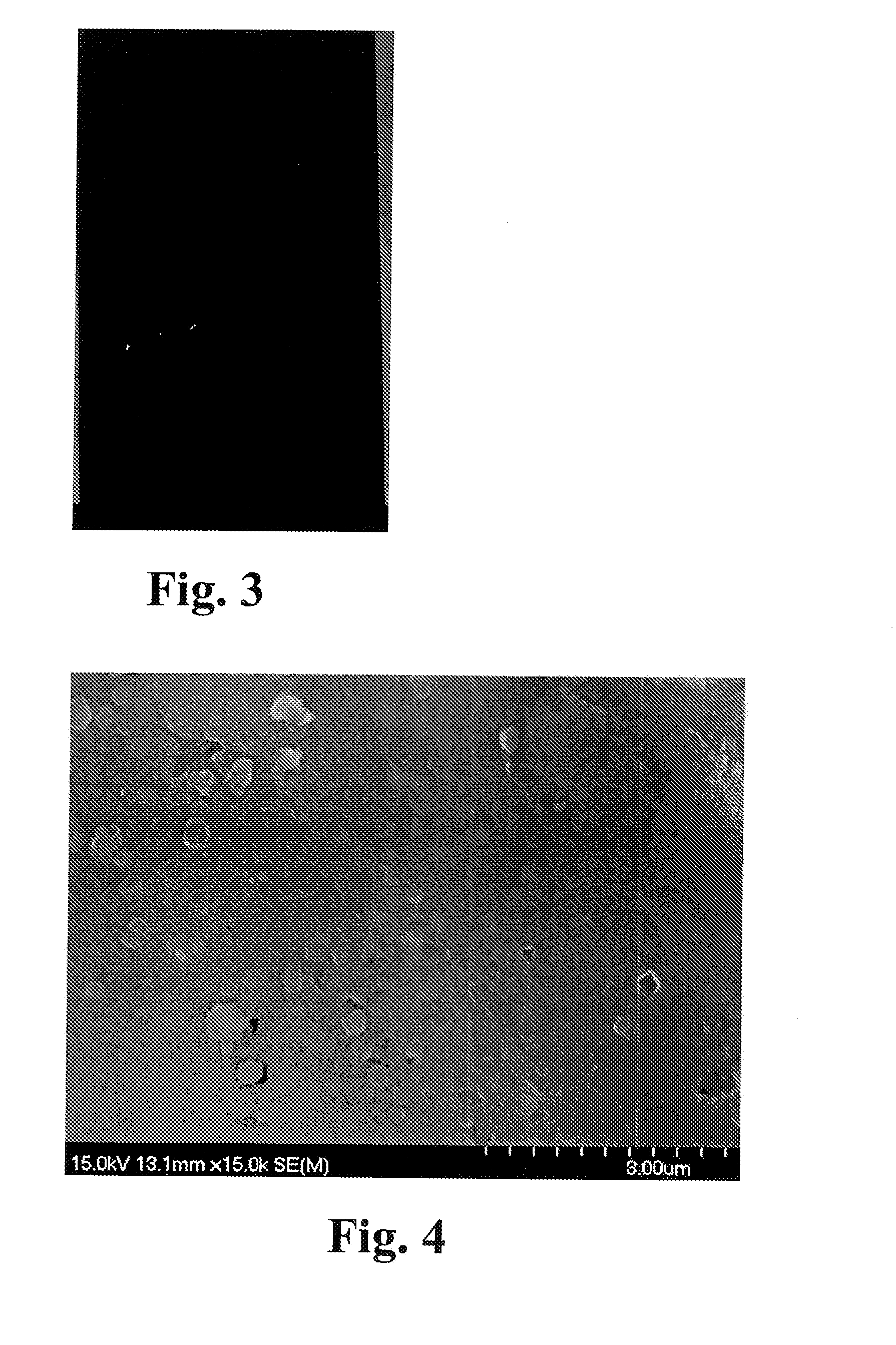Autodeposition on aluminum alloys facilitated by manganese oxide conversion coatings
a technology of manganese oxide and autodeposition process, which is applied in the direction of liquid surface applicators, metal material coating processes, coatings, etc., can solve the problems of aluminum and similar metals that are difficult to coat with prior art autodeposition processes, poor quality coatings, and process drawbacks, so as to avoid, or at least minimize, the evolution of hydrogen during the autodeposition process. , to achieve the effect of avoiding corrosion (dissolution) and avoiding the evolution of hydrogen
- Summary
- Abstract
- Description
- Claims
- Application Information
AI Technical Summary
Benefits of technology
Problems solved by technology
Method used
Image
Examples
example 1
1. Materials
[0049]Epon 828, a general epoxy resin with an epoxy equivalent of 188, was obtained from Resolution Inc. Desmodur E 23 A, a polyisocyanate, was procured from Bayer. Adipic acid, sodium dodecyl sulfate (SDS), methyl ethyl ketone (MEK), methyl isobutyl ketone (MIBK) azobisisobutyronitrile (AIBN), methyl methacrylate (MMA), butyl acrylate (BA), and acrylic acid (AA) were purchased from Sigma Aldrich. Inhibitors were removed from the monomers (except for acrylic acid) by passing through an “inhibitor removal column” from Aldrich. Acrylic acid was used as received.
2. Chain Extension of Epoxy Resin
[0050]Epon 828 resin (150 gm), adipic acid (69.2 gm), and MIBK (25 gm) were charged into a 1,000-ml, four-necked resin kettle equipped with an electric stirrer. The ingredients were heated to 140° C. Benzyldimethylamine (0.5 gm) was added to the above mixture and allowed to exotherm to raise the temperature to 180° C. The reaction mixture was held at this temperature for half an hour...
PUM
| Property | Measurement | Unit |
|---|---|---|
| thickness | aaaaa | aaaaa |
| thicknesses | aaaaa | aaaaa |
| thicknesses | aaaaa | aaaaa |
Abstract
Description
Claims
Application Information
 Login to View More
Login to View More - R&D
- Intellectual Property
- Life Sciences
- Materials
- Tech Scout
- Unparalleled Data Quality
- Higher Quality Content
- 60% Fewer Hallucinations
Browse by: Latest US Patents, China's latest patents, Technical Efficacy Thesaurus, Application Domain, Technology Topic, Popular Technical Reports.
© 2025 PatSnap. All rights reserved.Legal|Privacy policy|Modern Slavery Act Transparency Statement|Sitemap|About US| Contact US: help@patsnap.com



